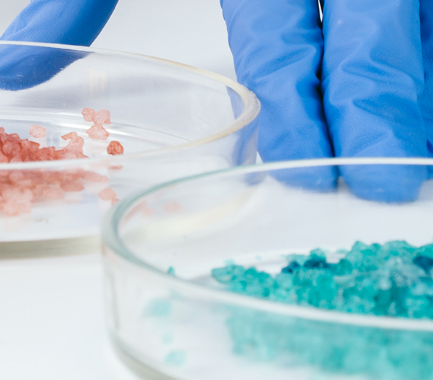Your contact
PENPET-Team - Hamburg

Christoph Meister
Sales
Tel. +49 (0) 40 - 675 7 99 30
sales@penpet.de
Get in touch with us.
Propylene carbonate
Propylene carbonate is a cyclic organic compound with numerous industrial and technical applications. It can be produced from urea and propylene glycol using a zinc iron mixed oxide catalyst. In addition, propylene carbonate occurs as a by-product in polypropylene carbonate synthesis.
Apart from its use as an intermediate in chemical industry processes, propylene carbonate is mainly used as a solvent and is found, for example, in paints, inks, nail polish remover, tar remover, general purpose cleaners and lithium batteries. It is added to cosmetic products and medicinal ointments to improve their viscosity and the mixing of the components. Other uses of propylene carbonate include degreasing metals, extracting aromatic hydrocarbons and as a plasticizer.
We reliably supply you with propylene carbonate in the desired packaging. We look forward to receiving your inquiry for an individual offer. Delivered as a liquid in tank containers, drums or IBCs.
CAS no. 108-32-7
EINECS no. 203-572-1
Molecular formula: C4H6O3
Synonyms: Carbonated Propylene Glycol Ester, Propylene Glycol Carbonate, 4-Methyl-1,3-dioxolan-2-one, 1,2-Propylene Carbonate, 1,2-Propanediol Carbonate, Propylene Carbonate, PC
Application examples: Versatile use as a solvent, including in cosmetics, medicinal ointments, paints, inks, nail polish removers and universal cleaners, and as a plasticizer for plastics
More Information
Propylene carbonate is an ester and consists of two components, as the synonymous name carbonic acid propylene glycol ester makes clear. The substance can therefore be split into the two starting materials carbonic acid and propylene glycol or used in the course of transesterification to form other carboxylic acid esters.
Propylene carbonate has a stereogenic center and exists in two stereoisomers. Their structure differs based on the spatial arrangement of the chemical bonds of a carbon atom. The two variants (R)- and (S)-propylene carbonate cannot be converted into one another by rotation and are present side by side. For the technical use of the substance, a mixture with a balanced proportion of the two stereoisomers is usually used.
Propylene carbonate is a clear, colorless liquid with a light and slightly fruity odor. The compound is only slightly volatile. However, at elevated temperatures, propylene carbonate vapors can form a flammable mixture with ambient air.
Due to its structure, propylene carbonate has a very strong dipole moment. This spatial charge separation within the molecule predestines the compound for use as a polar solvent. Valuable alkali metals such as potassium and sodium can be obtained from the corresponding salts by using propylene carbonate.
The compound itself is also readily soluble and miscible with water and organic solvents such as acetone, ethanol, diethyl ether, benzene or chloroform. Propylene carbonate is hygroscopic. It should therefore be stored in a dry place and kept away from moisture.
Propylene carbonate is a stable compound under normal ambient conditions, although it reacts readily with strong acids, strong bases, and strong oxidizing and reducing agents. This releases harmful amounts of carbon monoxide and carbon dioxide. The same applies when heating to decomposition. Propylene carbonate is flammable as a liquid, but is difficult to ignite.
Undiluted propylene carbonate can cause skin irritation. However, clinical studies have proven the harmlessness of the substance as a component of cosmetic preparations. Tolerance tests on animals have not revealed any toxic effects from ingestion, inhalation or undiluted skin contact with the substance. However, propylene carbonate is severely irritating to the eye and should be carefully flushed out with water. After ingestion, careful mouth rinsing and copious drinking of water are also usually sufficient to avert adverse effects.
The compound is considered to be slightly hazardous to water. If large quantities escape into the ground, the sewage system and bodies of water, the responsible authorities must be informed.
